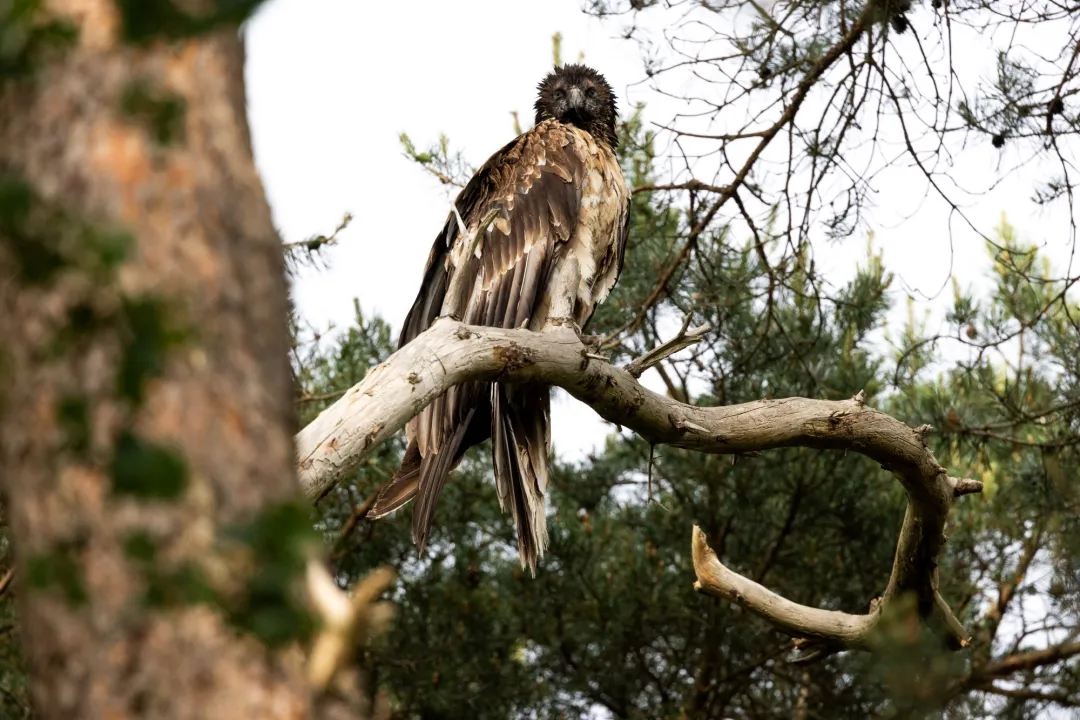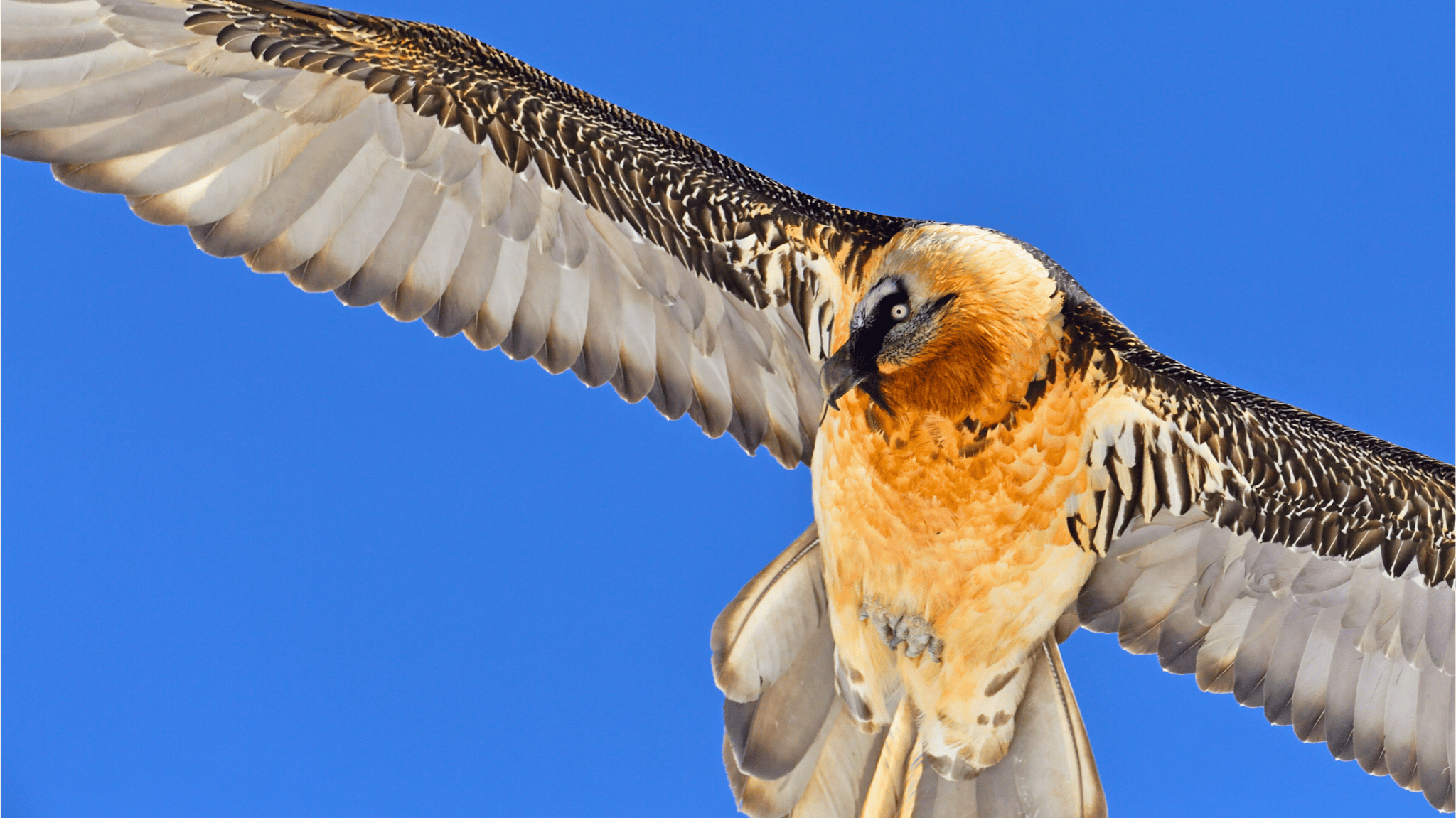
A couple of weeks ago, the juvenile Bearded Vulture Eglazine left her “home” heading north, and we have all the details of her adventures thanks to the GPS tag on her back and the field checks coordinated by our President.
Bred in captivity, released into the wild

In March 2020, Eglazine hatched in Parco Natura Viva, which is part of the Bearded Vulture Captive Breeding Network, coordinated by us at the Vulture Conservation Foundation (VCF) on behalf of EAZA’s EEP. Captive-bred Bearded Vulture chicks have a very important purpose — they support reintroduction and restocking efforts across Europe. Eglazine is no different. Around three months after hatching, she grew strong and healthy, and it was time for her new life in the wild. Her destination was the Grands Causses. Upon arrival, the local LIFE GypConnect team received the female vulture and equipped her with an identification ring and a GPS transmitter, allowing us to keep track of her behaviour and movements. In June 2020, the team placed Eglazine into the hacking platform, where she got familiar with her new environment, preparing her to take her first flight and venture into the mountains. Her release supported the project’s goals to establish a breeding population of the species in the Massif Central and the Pre-Alps through reintroduction and promoting dispersal movements between the Alps and the Pyrenean population.
Crossing France and reaching the Netherlands

A couple of weeks ago, nearly one year after her release, Eglazine left the Grands Causses. At first, she followed a northwest direction and found herself in the heart of Paris, flying between the Eiffel Tower and the Arc de Triomphe. Eventually, she arrived near Le Havre on the Channel Coast. On 19 April, she entered Belgium. And she did not stop there. Instead, she continued her journey north and reached the Netherlands. After briefly touring Zeeland-Flanders, she turned around at the Land of Saeftinghe and ultimately landed in a forest in Sint-Gillis-Waas, returning to Belgium — all in one day.
Of course, we closely followed her movements through the GPS data, but we wanted to make sure she was doing fine. So, when she first roosted in Belgium, one of the keepers from Planckendael Zoo visited her to check on her health and confirmed the bird was not in trouble. She resumed her wandering on 30 April, flying through Belgium, and eventually crossed the border around at Reusel, re-entering the Netherlands. In the following days, Hans Pohlmann, the VCF’s President, conducted several field visits to check up on her. And then, “she returned the favour” by visiting his hometown! During her stay in the Netherlands, Eglazine also endured terrible weather but had great guards looking after her — she was in a military complex at the time, and the army gave us regular updates. The young Bearded Vulture is still in the Netherlands and became quite the celebrity, with many people trying to get a glimpse of this magnificent bird. Luckily, the bird is currently staying at a nature reserve our President manages, and the wardens are making sure she is not disturbed and has plenty of food.
We are looking forward to seeing what Eglazine will do next. We hope she safely returns to France!
Follow the VCF on Facebook and Twitter to stay tuned with Eglazine!
LIFE GypConnect

Led by the League pour la Protection des Oiseaux (LPO), the LIFE GYPCONNECT project aims to establish a breeding population of Bearded Vultures in the Massif Central and Department of the Drôme. Releasing captive-bred Bearded Vultures into the wild at sites such as the Parc Naturel Régional des Grands Causses, Parc Naturel Régional des Baronnies Provençales and Parc Naturel Régional du Vercors will create a core population that will connect the two populations of the species in the Alps and Pyrenees. To facilitate movements between the new population and the Alpine and Pyrenean populations the LIFE GYPCONNECT team is creating a network of supplementary feeding stations, and tackling threats such as poisoning, and collision and electrocution with the electricity infrastructure.




